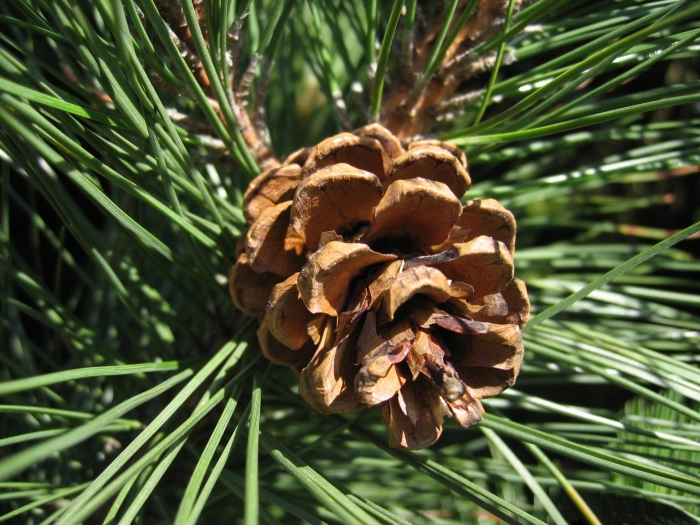Red Pine
(Pinus resinosa)
Red Pine (Pinus resinosa)
/
/

Keith Kanoti, Maine Forest Service, USA
CC BY 3.0 us
Image By:
Keith Kanoti, Maine Forest Service, USA
Recorded By:
Copyright:
CC BY 3.0 us
Copyright Notice:
Photo by: Keith Kanoti, Maine Forest Service, USA | License Type: CC BY 3.0 us | License URL: https://creativecommons.org/licenses/by/3.0/us/deed.en | Uploader: MPF | Publisher: Wikimedia Commons | Title: Pinus_resinosa_cone.jpg | Notes: {{Information |Description ={{en|1=x}} |Source ={{own}} |Author =[[User:Ercé|Ercé]] |Date = |Permission = |other_versions = }} |














































Estimated Native Range
Summary
Pinus resinosa, commonly known as Red Pine, is a coniferous evergreen tree native to the boreal forests and Great Lakes region of Northeastern and North Central USA, as well as parts of Southern Canada. It exhibits tall, straight growth, typically ranging from 20–35 meters (66–115 feet) in height with a trunk diameter of about 1 meter (3 feet 3 inches). The crown of Red Pine is conical in young trees, maturing into a narrow rounded dome as the tree ages. The bark is thick and scaly, providing some fire resistance. Its needles are long, in bundles of two, and have a rich green color. Red Pine is known for its intolerance of shade, preferring open areas where it can receive full sunlight. It is also well-suited to windy sites and is commonly found on sandy, well-drained soils.
Red Pine is valued for its straight timber and is often used in construction and for making poles. Its ornamental qualities include a stately form and attractive bark, making it suitable for use in large open landscapes, parks, and naturalized areas. It is a low-maintenance tree that requires minimal watering once established and thrives in soils with medium to fast drainage. While it is a long-lived species, reaching up to 500 years, it can be susceptible to pests such as the red pine scale and diseases like pine wilt.CC BY-SA 4.0
Red Pine is valued for its straight timber and is often used in construction and for making poles. Its ornamental qualities include a stately form and attractive bark, making it suitable for use in large open landscapes, parks, and naturalized areas. It is a low-maintenance tree that requires minimal watering once established and thrives in soils with medium to fast drainage. While it is a long-lived species, reaching up to 500 years, it can be susceptible to pests such as the red pine scale and diseases like pine wilt.CC BY-SA 4.0
Plant Description
- Plant Type: Tree
- Height: 50-80 feet
- Width: 18-25 feet
- Growth Rate: Moderate
- Flower Color: N/A
- Flowering Season: Non-Flowering
- Leaf Retention: Evergreen
Growth Requirements
- Sun: Full Sun
- Water: Low
- Drainage: Fast, Medium
Common Uses
Bird Garden, Butterfly Garden, Deer Resistant, Drought Tolerant, Fragrant, Low Maintenance, Rabbit Resistant, Rock Garden, Street Planting
Natural Habitat
Boreal forests and Great Lakes region, ornamental use in large open landscapes, parks, and naturalized areas, susceptibility to red pine scale and pine wilt
Other Names
Common Names: Norway pine
Scientific Names: Pinus resinosa , Pinus rubra , Pinus resinosa f. globosa , Pinus resinosa f. resinosa
GBIF Accepted Name: Pinus resinosa Aiton